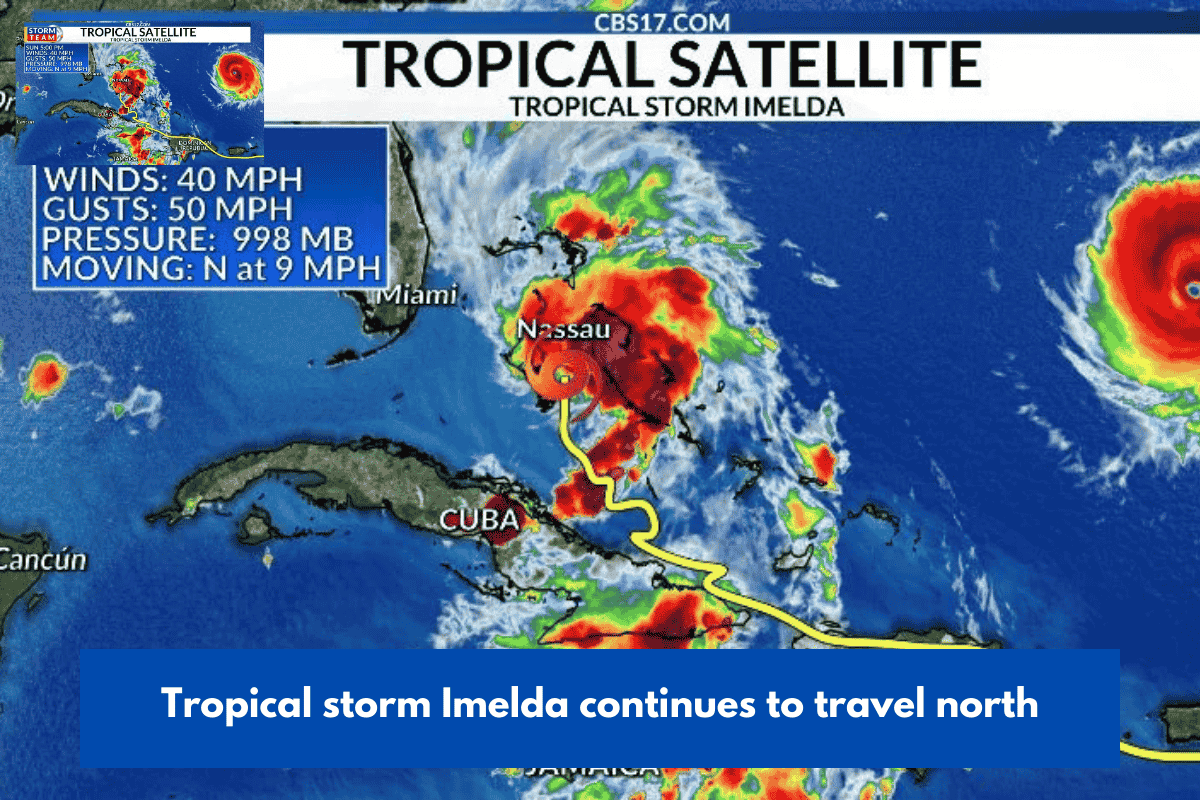MYRTLE BEACH, S.C. – Sunday, September 28th, 2025, 11:00 PM update. Tropical Storm Imelda was upgraded to a tropical storm on Sunday afternoon.
Imelda is currently located 320 miles southeast of Cape Canaveral, Florida. The winds remain at 40 mph. Moving north at 9 mph. The pressure is 998 mb.
Imelda will then slowly track north to just off the coast of Jacksonville Beach, Florida, and Hilton Head, South Carolina. This is where Imelda will head out to sea. This means that the majority of the impacts will occur out at sea and will have no effect on our area.
We should start to see Imelda leave the area by Wednesday evening, bringing better conditions for the rest of the week.
Monday – Wednesday.
Impacts: Rain – Heavy rain is currently expected in the area early next week. Up to 3-5 inches of rain are expected along the coast. Some models show less, while others show more. Currently, inland 1-2″ is possible.
Wind- Currently, the eyewall is staying off the coast. Northeast wind at 15-25 mph with gusts to 30-40 mph.
Coastal threats include minor to moderate coastal flooding and beach erosion, which are expected through midweek, particularly during high tide cycles.
Tornado – Currently, the threat of tornadoes appears to be off the coast.
For the time being, Imelda will gradually move out to sea. Because Imelda will be a slow moving storm, it will grow. We’ll be on the storm’s northern edge. This will result in a constant Northeast wind of 15-25 mph, with gusts approaching 30-40 mph. We can expect heavy rains. We should not see any flooding, but there is a chance that a few locations will experience isolated flooding where higher amounts may occur.
Humberto strengthened to a category five hurricane Sunday evening. It is now down to category four, with maximum sustained winds of 140 mph.
Humberto does not pose a threat to the United States, but it will cause high surf and strong rip currents along the east coast.














